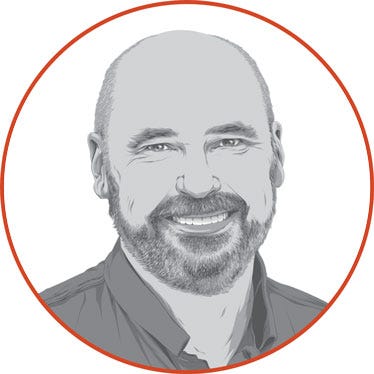
How long can you hold out?
That is, how long can your business endure low grain prices as you wait for better economic times and growing global demand?
In times like this it’s easy to think such a time may never come again. But people gotta eat. Low prices will eventually discourage more corn and soybean acreage. New middle class consumers, hungry for meat-based diets, are being minted in growing economies far from here.
There’s no doubt good times are ahead. But when?

Average corn price per bushel: Grain prices hit historic highs in recent years only to collapse over high supplies and weak global growth.
The agricultural credit cycle exhibited two upturns in the past 50 years: from 1973 to 1982 and from 1992 to 2009. We also experienced two downturns, from 1968 to 1972 and from 1983 to 1991, with an average duration of 7 years. The cycle is currently exhibiting a downturn following a peak in 2009.
The good news, adds University of Illinois economist Todd Kuethe, is that most economic models say we are in the midst of – not the beginning of - tough times.
Income growth leads boom
As Bryce Knorr points out in his masterful cover story beginning on p. 32 of our February issue, big change drivers like ethanol and China’s boom are a thing of the past. What will likely move this market instead – barring weather catastrophes - is a global convergence of population and GDP growth in faraway places, notes Vikram Mansharamani, a Yale lecturer and best-selling author. I heard Mansharamani speak at a Farm Credit Mid-America conference in December and was impressed by his insights.
Today more than 50% of global consumption is happening in emerging markets, and that figure will increase to 75% in the future. Just 20 years ago 75% of consumption was in developed nations; In the next 10 years, three out of four consumers of goods and middle-class services in the world will be based in emerging markets, he says.
And forget what you think about BRICS (Brazil, Russia, India, China and South Africa). Mansharamani bases much of his outlook on what he calls the ‘future 15,’ a basketful of countries that includes China and India but not Russia and Brazil. These 15 countries have populations greater than 25 million and GDPs less than $10,000 per capita. They represent more than half the world’s current population and have average incomes of less than $5,000 today.
That figure - $5,000 – is the tipping point at where people start upgrading diets and include animal protein. China began growing its middle class a decade ago and now is doing its best to keep up with demand. The same pattern may occur in these countries, leading to a boom for food commodities.
A pound of chicken meat requires about two pounds of grain. For pork, each pound of meat requires three to four pounds of grain. That will boost grain prices.
“When populations collide with income, one likely outcome is a consumption boom – with an unprecedented impact on a wide range of food and energy commodities that will impact the global standard of living,” he says.
This boom could happen as soon as 2020. Folks who do a good job managing their business will be in position to enjoy that uptick. Thin margins will weed out the poor managers, just as they did back in earlier down cycles.
“The most dangerous phrase in farming right now is, 'We've always done it that way,'” says Texas A&M economist Danny Klinefelter. “Many farmers will be washed out of business in the next 10 years because of management obsolescence. They will be derailed by one or more of the following: regulations, new technologies, lack of people management skills, or the worst: ‘I'm doing it the same way my dad did it.’”
There aren't any secrets or magic bullets in farming. It's really about priorities – putting time in on the important things. And in today’s business climate, the priority is on margin management.
“The function of a competitive market is to drive the economic return to the average producer to breakeven,” explains Klinefelter. “In equilibrium, the top end is profitable and growing, the average is hanging in there, and the bottom end is losing money and exiting the industry.”
Business success and survival depend on continuous improvement at a pace necessary to stay in the front of the pack. For your business to succeed and continue, management must learn, adapt and continuously improve at the rate set by the leading edge of the competition, and not by your own comfort zone.
In other words, you can be moving ahead and still fall behind.
Strategic management is about anticipating, adapting to, driving and capitalizing on change. The producer who does that faster wins. Your task is to navigate the tough economic conditions until the bust ends, the boom begins, and it all translates to higher commodity prices.
Last question: Are you ready?
About the Author(s)
You May Also Like






